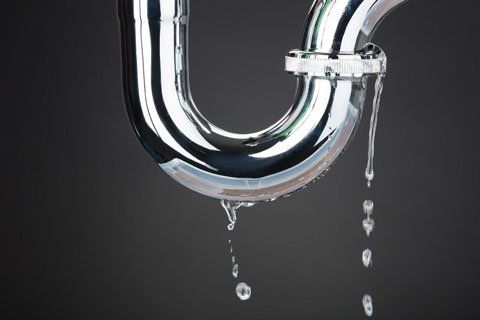6 Ways to Find Hidden Water Leaks in Your House
6 Ways to Find Hidden Water Leaks in Your House
Blog Article
Just about every person has their own individual rationale on the subject of Leaking water lines.

Early discovery of leaking water lines can reduce a prospective calamity. Some tiny water leaks might not be noticeable.
1. Take A Look At the Water Meter
Every home has a water meter. Examining it is a proven manner in which helps you discover leakages. For starters, shut off all the water sources. Guarantee no one will certainly purge, use the faucet, shower, run the cleaning device or dishwashing machine. From there, most likely to the meter as well as watch if it will alter. Because no person is utilizing it, there should be no activities. If it relocates, that indicates a fast-moving leak. If you discover no modifications, wait a hr or two and also examine back once again. This means you might have a slow-moving leak that might even be underground.
2. Check Water Usage
Assess your water costs and track your water usage. As the one paying it, you ought to discover if there are any discrepancies. If you find sudden changes, in spite of your usage coinciding, it means that you have leakages in your plumbing system. Bear in mind, your water bill need to drop under the very same range on a monthly basis. An unexpected spike in your costs indicates a fast-moving leak.
Meanwhile, a stable increase every month, despite having the exact same habits, shows you have a sluggish leakage that's likewise slowly rising. Call a plumber to thoroughly examine your residential or commercial property, specifically if you feel a warm area on your floor with piping beneath.
3. Do a Food Coloring Test
When it comes to water usage, 30% comes from commodes. If the color in some way infiltrates your dish during that time without flushing, there's a leakage between the tank and also bowl.
4. Asses Outside Lines
Don't forget to check your outdoor water lines also. Must water seep out of the link, you have a loose rubber gasket. One little leakage can squander heaps of water and also increase your water expense.
5. Check and also Analyze the Circumstance
Homeowners need to make it a routine to examine under the sink counters as well as even inside cupboards for any bad odor or mold and mildew growth. These 2 red flags show a leak so punctual attention is needed. Doing routine examinations, also bi-annually, can save you from a significant problem.
Check for stainings and also compromising as a lot of pipelines and devices have a life expectancy. If you suspect dripping water lines in your plumbing system, don't wait for it to intensify.
Early discovery of dripping water lines can minimize a prospective calamity. Some tiny water leakages may not be visible. Inspecting it is a guaranteed way that assists you find leaks. One small leak can lose heaps of water and surge your water costs.
If you presume leaking water lines in your plumbing system, do not wait for it to escalate.
WARNING SIGNS OF WATER LEAKAGE BEHIND THE WALL
PERSISTENT MUSTY ODORS
As water slowly drips from a leaky pipe inside the wall, flooring and sheetrock stay damp and develop an odor similar to wet cardboard. It generates a musty smell that can help you find hidden leaks.
MOLD IN UNUSUAL AREAS
Mold usually grows in wet areas like kitchens, baths and laundry rooms. If you spot the stuff on walls or baseboards in other rooms of the house, it’s a good indicator of undetected water leaks.
STAINS THAT GROW
When mold thrives around a leaky pipe, it sometimes takes hold on the inside surface of the affected wall. A growing stain on otherwise clean sheetrock is often your sign of a hidden plumbing problem.
PEELING OR BUBBLING WALLPAPER / PAINT
This clue is easy to miss in rooms that don’t get much use. When you see wallpaper separating along seams or paint bubbling or flaking off the wall, blame sheetrock that stays wet because of an undetected leak.
BUCKLED CEILINGS AND STAINED FLOORS
If ceilings or floors in bathrooms, kitchens or laundry areas develop structural problems, don’t rule out constant damp inside the walls. Wet sheetrock can affect adjacent framing, flooring and ceilings.
https://www.servicemasterbyzaba.com/blog/how-to-detect-water-leakage-in-walls/

As a devoted reader about Detecting hidden plumbing leaks, I figured sharing that excerpt was a good thing. Appreciated our piece? Please share it. Help another person find it. We thank you for reading our article about Top leak detection hacks.
Report this page